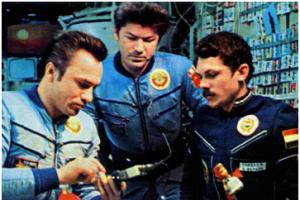The automobile compressor has replaced the hand and foot pump for inflating tires. The most pleasant advantage of this device is that it is fully automatic and in order to inflate the tire you do not need to use physical effort. It is convenient to have a compressor always at hand, no matter where you are. However, it happens that it fails and then repairs may be required.
Why is a compressor today a driver's essential item? After all, there are so many service stations and tire shops around where you can pump up tires and, if necessary, make other repairs. It's simple. A tire can go flat anywhere, for example, in a mountainous area or in a suburban area, far outside the city - there is not always a specialized workshop nearby. And then, it’s better not to lose control of the situation and fix the problem yourself, quickly, without unnecessary expenses and hassle.
Causes of compressor failure
The most common cause of a car compressor malfunction is a banal fuse blown. The fuse of the unit or the one located on the wire may burn out. This type of damage is not serious and can be repaired very quickly. Moreover, spare parts for repairs can be bought in almost every store, for example here exist.ua.
Also, one of the options in which the compressor fails involves damage to the power cord. It is very easy to identify this problem. It is enough to visually examine the wire and find the place of the tear or break. This problem can also be dealt with easily and quickly. Surely every man has changed the plug on the iron cord.
There are also more serious reasons for the failure of automobile compressors. For example, if the winding of an electric motor or vibration coil catches fire, it is rarely possible to save the patient.
If you find that the compressor turns on, but does not give the desired effect, that is, does not pump air, look for a problem in the wear of the piston or fluoroplastic ring. In this case, it will be cheaper to purchase a new car compressor than to carry out repairs and buy new spare parts.
But most often the problem is not acute and requires minor intervention, replacement of a spare part or component. Usually this is a leaky hose, a valve that fits on the wheel nipple, a rubber gasket ring, brushes, and nozzles.
Features of auto compressors
Due to the fact that the car compressor comes with various attachments, it can be used not only for inflating car tires, but also for balls, inflatable boats, bicycles, etc. That is, a compressor plus nozzles is a universal device that allows you to solve several problems at once.
In order to repair a compressor, it is important to know its structure and features. So, each representative of automotive compressors is equipped with:

- Electric motor;
- Pressure gauge;
- Cylinder;
- Piston;
- Other components (cables, brushes, gaskets, nipples, nozzles).
According to their design, they distinguish between membrane and piston compressors. The principle of operation of a membrane compressor is to compress gas due to the fact that the translational movements of the membrane reduce the volume of the chamber. The membrane, sandwiched between the cylinder and the lid, begins to vibrate and acts like a piston.
Piston compressors are equipped with a special piston, which, when connected to the crankshaft, sucks in air masses. They are much more popular among car enthusiasts.
To ensure maximum pressure, piston compressors operate in stepped mode. Thus, the compressed air mass is distilled from one cylinder to another through a cooling tube. The volume of one cylinder is intentionally larger than the second, but the latter pressurizes the air, increasing the efficiency of the device.
Weaknesses of a membrane compressor
The weakest part membrane compressors is a membrane. If foreign particles accumulate in the gas cavity of the unit. Important aspects work with such a compressor are:
- Keeping the block clean.
- Prevents moisture and dirt from entering the membrane block.
- Timely replacement of spare parts (membrane, gas valve, pressure limiter).
Weaknesses of a piston compressor

The most common problems with a piston compressor are:
- The compressor refuses to start;
- There is no release of air into the receiver, although the motor is running;
- Knocks out fuses;
- Air pressure drops sharply;
- Incorrect operation of the thermal protection circuit breaker;
- The humidity of the air pumped by the compressor is increased;
- The motor operates at high vibrations;
- The connection between the hose and the nozzle is worn out and the air is leaking.
What to do if the compressor does not start
If the device refuses to work, you need to perform certain diagnostic actions using an indicator screwdriver. We examine whether there is a phase and whether voltage is supplied. If everything is in order with the phase, proceed to checking the fuses, perhaps they have melted. If this is the case, then simply replace the fuse. It is important to remember that when making repairs, the installed spare parts must be of equal value.
After replacement, everything should work, however, it happens that the fuse blows again. This suggests a possible short circuit. Repair needed. Call the diagram. When the faulty parts are installed, replace them with new, similar parts.
Compressor failure may be due to a failure in the settings of the pressure control relay. To diagnose this problem, do the following: bleed the air and restart the compressor. If you hear the sound of the motor running, reset the settings, the motor is not functioning, you need to replace it. Remember that when the thermal protection is working intensively, it is necessary to cool the engine for at least 20 minutes, this will normalize the operation of the compressor.
Particular attention is paid to the situation when, when the device is turned on, both the fuse and the thermal protection fail. If the only problem is that the installed fuse is not designed for the operating power of the unit, then the repair comes down to a simple replacement of the spare part. But if the relay fails, do not try to get into it yourself. In order to receive qualified repairs, go to the service center.

In a situation where the piston is faulty, you need to disassemble the device. When making repairs, release the air, clean the valve from dirty formations; if the pressure continues to drop, the problem is in the valve and it needs to be replaced.
Where to get spare parts for compressor repair
With such an abundance of auto stores and places where components are sold, your head can simply spin. Where can I buy spare parts for repairs or new attachments? Basically big difference There are no spare parts at places of sale. It's a matter of convenience for everyone. Some people go to a specialized store, some for meal, while others find it convenient and profitable to order spare parts via the Internet. The taste and color, as they say.
The main thing is not to run into a fake when making a purchase. Original spare parts- the key to their long service. Ask for a certificate or warranty card when purchasing new parts for repairing compressors from the seller.
In general, compressor repair is simple and can be done without the appropriate experience or qualifications. Although it is better to prevent breakdowns in advance by simply caring for the equipment.
Not really
Possible reasons for insufficient performance of a screw compressor.
Why doesn't the screw compressor pump?
When screw compressor ceases to produce rated performance, you often hear the phrase from the client: “Maybe the screw block is already old, worn out?”
Many people look at this problem by analogy with a piston compressor, where a drop in performance is often associated with increased wear of the piston rings and cylinder bore. Meanwhile, mechanical wear of the surfaces of screw stage rotors is very rarely the reason for a decrease in performance even of a fairly old compressor. The fact is that when working screw block, unlike a piston compressor, there is virtually no mechanical friction between the rotor surfaces due to the formation of an oil wedge. In this mode, the screws can operate for decades; the only danger from the point of view of wear is the moment the screw compressor is started, when the pressure in the system necessary for the operation of the lubrication system has not yet been reached. Only the bearings wear out in the screw block, which are changed during a major overhaul, and this wear does not affect performance. The wear on the screws is a sign that it is time to throw out the screw block; as a rule, very little time passes from the appearance of such wear to the jamming of the block. The reasons for a decrease in the performance of a screw compressor are usually completely different. First of all, you need to check the suction valve - perhaps it does not open or does not open completely for some reason. A dirty air filter can also be the cause of this malfunction - it creates a vacuum at the inlet and does not allow enough air to pass through. The third option is an air leak through the bypass line, which should supply air from the separator tank to the compressor suction during idling and shutdown of the compressor. If this line is not blocked during the working stroke, some of the air will run in a circle. Insufficient performance can also be caused by air leakage through any leaks inside the compressor. We do not consider the options of critical contamination of the compressor air pipelines or insufficient oil, since these factors are manifested primarily by other symptoms, and there is no time for lack of performance.
But, frankly speaking, from practice the most common reason for a drop in productivity is... the absence of such a drop. The reason is not within compressor, and outside - an increase in compressed air consumption in the line. This can happen due to the connection of additional consumers, leaks of compressed air through leaks or fistulas that appear as a result of corrosion on pipelines, and simply because someone somewhere forgot to close the tap (this has happened, it’s especially interesting when this tap is located in a remote, isolated and long-closed room, where compressed air lines, it seems, should not pass through according to the design).
Therefore, when you suspect a drop in performance, you should first check the line. If this is difficult, you can empirically measure performance compressor, and then it will become clear whether it is necessary to call service department For compressor repair, or it is serviceable and the cause should be looked for elsewhere.
During the operation of piston compressors, situations periodically occur when your compressor may not gain (gain) the required pressure. What to do in this case? Let's look at the main reasons why the compressor fails due to loss of pressure.
So, if you are faced with a similar situation, you need to understand for yourself that there may be several reasons. The first, simplest thing that can happen to a compressor is an air leak, simply put, compressed air “siphoning” somewhere.
Therefore, you can take a brush with soapy water, lubricate the connection points from the piston block to the receiver and check for soap bubbles. If air poisons, it is necessary to tighten the threaded connection. But the copper (aluminum) tube that goes from the head to the receiver could simply burst. In this case, it will have to be replaced and here you will no longer be able to do without additional components. However, you can purchase them at the nearest authorized center of the manufacturer of the brand of compressor you purchased.
The most common thing that could happen to your compressor is when your condensate drain valve, which is usually located below, on the receiver, is not sealed.
We check how correctly the piston block works for suction and vice versa. To do this, unscrew the air filter and bring a small piece of paper (business card, calendar) - it should stick, that is, look at the “suction”. Then, we disconnect the line near the piston block (or near the check valve) and check the exhaust also by bringing a piece of paper, only now it should bend under the pressure of compressed air.

This way we check the integrity of the valve plates. If there is no pressure, then you need to change the valve plates by purchasing a repair kit. Another, not the most common reason, but it does happen, especially when the compressor is new, is when the rings on the compressor pistons may be turned incorrectly. As a rule, the three grooves should be rotated by locks approximately 120 degrees to the previous break point. In order to see this, you definitely need to disassemble the piston block a little.
 If everything works fine in the area of the piston block for “suction” and “exhaust”, then once again crimp threaded connections and look further for the reason.
If everything works fine in the area of the piston block for “suction” and “exhaust”, then once again crimp threaded connections and look further for the reason.
It's worth checking out separately check valve for “sticking”, which can impede the movement of compressed air. It can be untwisted and checked for the presence of foreign elements in it. If it itself is not working, then repair it or replace it with a similar one.

A separate case is a pressure switch, in which the on/off function can be implemented in the form of a button or lever. If it is in the form of a button, then you need to check it and press it towards you; if it is in the form of a lever, then turn it completely to the side. Sometimes, due to a button not being fully pressed or a lever not being turned, the compressor may not gain the required pressure.
It should be noted that all of the above measures should be carried out in the case when “the master’s work is afraid”, if you are not sure of own strength, you should definitely contact a service center and carry out diagnostics to identify the cause of the malfunction.
Pnevmomagazin.ru
The compressor is quite complex Technical equipment, as it is used, it has the right to wear out and break. In this article we will consider all methods of maintenance and operation to maximize its life. Execute DIY compressor repair, if it is still broken, perhaps.
The reliability of compressor equipment largely depends on timely and high-quality maintenance. A large number of breakdowns of piston compressors are a consequence of poor quality cleaning of compressed air (abrasive dust, water, and other impurities). The use and timely replacement and cleaning of filter elements will delay compressor repairs for a long time.
The main reasons why an air piston compressor fails:
- Adverse operating conditions
- No scheduled maintenance
- Incompetent service staff
To ensure high-quality maintenance, operation and repair of the compressor with your own hands, it is necessary to solve all the above points.
The main difference between maintenance and repair of a compressor is that during repairs a forced replacement of certain parts is carried out, and when maintenance Parts are replaced as necessary depending on their actual condition.
Operating principle and components
A compressor is a device for increasing pressure and moving gas to the required source (, grinding machines, impact wrenches, and any other pneumatic equipment). The main equipment in demand in body repair became a piston, oil-type compressor. In piston engines, the volume of the working chambers changes with the help of pistons that perform reciprocating motion.
They have different numbers of working cylinders and are distinguished by the following structural arrangement:
- Horizontal
- Vertical
- Opposite
- Rectangular
- V and W shaped
- Star-shaped
The main design flaws: incomplete balance of their moving parts, the presence of a large number of friction pairs, etc. All this causes failure and subsequent repairs.
Before you repair the compressor yourself, you need to study its technical structure. The photo below shows a diagram of a single-stage compressor, piston group.

- Crankshaft
- Frame
- connecting rod
- Piston pin
- Piston
- Cylinder
- valves
- Cylinder head
- Valve plate
- Flywheel
- Oil seals
- Crankshaft bearings
On the housing near the electric motor there is an automation unit called a presostat. Using it you can adjust the compressor. It is possible to lower or increase the pumped pressure.
Reciprocating compressor malfunctions
If any defects are detected (knocks, jamming of rubbing parts, strong heating, increased consumption of lubricant, etc.), it is necessary to carry out repairs.
It is important to determine the type and scope of repairs at the stage of diagnosing the condition of the object before repair. Compressor malfunctions can be divided into two groups: technical malfunctions (working part, piston group and electrical equipment malfunctions). Below are the most common breakdowns:
- The electric motor hums and does not rotate
- The compressor does not pick up speed
- Knock in the cylinder-piston group
- Cylinder gets too hot
- Productivity has dropped
- Strong vibration

Compressor (electric motor) does not start
The compressor does not turn on, the most common problem. The main and trivial thing that can happen in this breakdown is that there is no voltage in the network. The first thing you should check is the plug and wire supplying the electric motor for breaks. Using a special “tester screwdriver”, check whether voltage is supplied to all phases. Check the fuse if there is one. Make sure the starting capacitors are working (single-phase compressors have a voltage of 220V).

Pay attention to the pressure level in the tank (receiver). Perhaps the pressure is sufficient and the automation does not start the compressor; as soon as the pressure drops to a certain level, the electric motor will start automatically. This is not a breakdown; many people forget about this nuance and worry ahead of time.
The check valve can also become a problem if the compressor does not turn on. Also, a faulty automation unit (pressostat) affects the breakdown (on, off), the button on the unit itself may have become unusable.
If the electric motor does not start, it hums, the buzzing does not pick up required speed or stops during operation, this does not always mean it is broken.
The main malfunctions of the electric motor that may interfere with its proper uninterrupted operation:
- Low motor power (insufficient mains voltage)
- Loose connections, poor contact
- The check valve has failed (is leaking), thereby creating back pressure
- Incorrect start of the compressor (see operating instructions)
- The piston group is jammed (due to insufficient oil level, overload)
If the electric motor of the compressor does not turn on at all and does not make sounds, this indicates the following:
- Power fuse tripped electrical network
- Overload protection tripped
- Poor contact in electrical circuit(problems with electrical wiring)
- The worst thing is that the electric motor burned out (there is often a characteristic smell)
Knocking and rattling in the cylinder and piston group
 One of the reasons for compressor failure is a faulty piston group. Recognizing a defect in this system is quite simple. They are usually accompanied by knocking, roaring, grinding and other metallic sounds. If the compressor knocks, then its discharge part, where there are many metal parts that interact with each other, is faulty. Due to their friction and wear, extraneous noise and unpleasant sounds appear.
One of the reasons for compressor failure is a faulty piston group. Recognizing a defect in this system is quite simple. They are usually accompanied by knocking, roaring, grinding and other metallic sounds. If the compressor knocks, then its discharge part, where there are many metal parts that interact with each other, is faulty. Due to their friction and wear, extraneous noise and unpleasant sounds appear.
You should not start with such a breakdown; if possible, you should fix it as soon as you hear the first signs of their manifestation. Main malfunctions if the compressor begins to knock and operate louder than before:
- Broken, worn out bearings, connecting rod bushings
- The bearings on the crankshaft have failed.
- Worn piston, rings, piston pin
- Worn cylinder
- Loose cylinder and head bolts
- A solid particle has entered the cylinder
- The cooling impeller has become loose on the pulley
To repair these breakdowns, in simple cases it is enough to tighten all the bolts and nuts. If the piston, cylinder, crankshaft or connecting rod are worn out, then a comprehensive overhaul is required. When repairing a piston group, you may have to bore the cylinder, if it is badly worn and has external defects, and select a repair piston to new sizes. The following are possible defects in the piston system:
- Changing the diameter of the piston, cylinder
- Distortion of the shape of the cylinder mirror shape
- Risks, scratches, burrs on the cylinder walls
- Cracks in the main working part
- Cracks and broken flanges
During long-term operation, due to wear, marks appear on the cylinder surface, and the inner diameter of the sleeve for the eccentric shaft increases. During repairs, cylinders are restored by pressing liners into them. Worn bushings for the eccentric shaft are replaced. This repair is quite difficult to do with your own hands without the necessary tool and equipment. Since the most labor-intensive and critical stage is the restoration of the cylinder. Boring is performed on a vertical boring machine using a special device.
This concerns the cylinder; below we will consider the main malfunctions of the compressor crankcase.
- Cracks in the walls of the crankcase cavities
- Deviations in the size and shape of landing pads
- Warping of seats
- Crashed seats for crankshaft bearings
When these units wear out, they must be replaced with new ones. The hole for the bearings is bored on a horizontal boring machine under larger diameter bearings or for pressing a bushing with subsequent boring of the pressed bushing to the required diameter. Repair of a compressor of this complexity should be carried out by qualified specialists.
Below, spare parts “repair kit” for major repairs of the compressor and piston group.

The compressor gets very hot
If the compressor gets very hot, this indicates some kind of malfunction. There may be several reasons for overheating. Starting with a simple one, the air flow to the cylinder and crankcase is blocked. Check whether the impeller is blocked by foreign objects.
One of the main reasons for an overheating compressor is insufficient oil level. The working units wear out, high friction is created and as a result it gets very hot. If such work continues, the equipment will quickly fail. Check the oil level; if it is not enough, you need to add it to the required level.
Valve malfunctions due to carbonation or loosening. There may also be clogged air passages.
Check the pressure level, perhaps the automation has broken down and the compressor is “threshing” until high pressure, this causes overheating. May need repair or replacement safety valve.
Try to locate the compressor in a cool, spacious place, especially during the hot season. Whatever cooling it has, it will heat up much less, which will affect its positive and durable operation." Also, do not forget that the colder the air, the less moisture and oil impurities it contains.
Productivity has dropped
A drop in performance can be due to several reasons. The suction air intake is clogged and clogged. Remove and clean the filter with compressed air or replace it. Basically, in piston compressors it is made of ordinary foam rubber.
There may be an air leak somewhere. Inspect all incoming and outgoing tubes and hoses. Just as in the previous case, wear and incorrect operation of the valves is possible, this greatly affects performance. With sufficiently long use, the piston rings wear out and sealing is lost. In more serious cases, the cylinder and pistons are worn, scratched or have other external defects, which leads to a loss of compression and the compressor stops pumping air.
It is worth checking the tension of the belt connecting the electric motor and the crankshaft of the piston system. If loosened, slippage may occur and the compressor will no longer pump air properly.
Oil enters the working chamber
If oil gets into the working chamber, these are quite bad signs; of course, this will not lead to complete failure of the compressor, but it will cause harm painting work and the emergence, it very well may. The main reasons for oil getting into places where it is not needed: Low viscosity oil is poured, that is, the oil is too liquid, it seeps through the seals and rings. Oil level is too high. Due to excess oil, it is forcefully squeezed out and enters the chamber. Incorrect oil used. Fill only with special compressor oil.
The pistons and rings in the cylinder block are worn out. Also, wear of the cylinder itself affects the penetration of oil into the working chamber. To eliminate the malfunction, repair of the piston group compressor, which is described above, is required.
Compressor operation and maintenance
A piston compressor, like any technical equipment, requires some maintenance. Correct operation will help extend the life of your compressor equipment. Let's consider the main activities for maintenance, repair and operation of the compressor.
1. Replacement and cleaning air filter. The filter element is mainly made of nonwoven fabric, foam rubber or syntonin. If the compressor is located in the same place where the car is being painted, then it gets heavily clogged (sticks) with dust from other things. paint and varnish material. The filter prevents abrasive dust from entering the cylinder, and the piston and cylinder wear less. Change and clean the filter as often as possible, as this will significantly increase the resource and delay repairs compressor.
 2.
Changing the oil is a very important point. Monitor the oil level on a special indicator (window) in the compressor crankcase. Operating at a low level or without oil leads to serious major renovation. Top up to the required level if it is not enough. Periodically it is necessary to completely drain and refill. Use only special compressor oil. Oil for piston compressor Mobil, Fubug, Shell VDL 100, KS 19, 46 or any other branded oil.
2.
Changing the oil is a very important point. Monitor the oil level on a special indicator (window) in the compressor crankcase. Operating at a low level or without oil leads to serious major renovation. Top up to the required level if it is not enough. Periodically it is necessary to completely drain and refill. Use only special compressor oil. Oil for piston compressor Mobil, Fubug, Shell VDL 100, KS 19, 46 or any other branded oil.
3. Condensate drain. An important point in compressor maintenance. The air is saturated with moisture; it inevitably enters the receiver with the intake air. Over time it accumulates in large quantities. If there is a high content of condensate, it can be released into the air hoses, which leads to defects during painting. Also, due to condensation, corrosion begins inside the receiver. Drain condensate as often as possible, at least once a week, especially during hot and humid seasons.
4. Follow general condition, periodically blow off dust and other contaminants. Please pay attention Special attention impeller on the electric motor, cylinder fins, air radiator; as they are used, dust and dust from paint stick to them, which reduces the cooling capacity.
5. Inspect the drive belt for wear and tension. When you press the belt in midpoint it should not sag by more than 12 -15 mm. Tighten all bolts and nuts. Periodically check the operation of the safety valve, which serves to protect against overpressure, due to a breakdown of the pressure switch.
Follow all of the above methods and you will delay compressor repair for a long time.
Liked? Share with a friend and rate the article
Operation and repair of a piston compressor 55,069 Views
Air compressor– a mechanism that drives pneumatic devices, often used in screwdrivers, drills, etc. Moreover, this indispensable tool for summer residents - processing, spraying plants, pruning trees, whitewashing - these are just some of the capabilities of this unit. The compressor also inflates tires and is used to blow debris out of hard to reach places. The list of possible uses of the mechanism on the farm is very large. If you have it, then, of course, you have already appreciated its usefulness. But, as with any technical device, it is possible that the compressor does not turn on. Let's look at the likely reasons why this happens and how to eliminate them.
The design of a household compressor is quite complex; classic scheme devices are being added additional elements, for example, for air humidification, automation of work. This makes it difficult to find the reason why the unit does not start. The fact that the compressor does not turn on can be influenced by external factors and mechanism failures. TO external factors This can be attributed to low temperature in the room where the unit is installed, insufficient network voltage. Let's talk in more detail about technical problems.
The system supercharger does not start - one of possible reasons. The engine does not turn on if there is no power. You need to check the connection to the socket, the presence of “zero” and “phase” with an indicator screwdriver. If everything is in order with this, then we check the condition of the compressor fuses. If there are burnt out ones, they are replaced with elements of a similar model. After this, we try to start the installation again, if this again fails and the fuses “burn out” again - the problem lies in a short circuit at the input of the circuit, it must be eliminated. If everything is in order with the fuses, we check the relay.
Its malfunction is the second possible reason for the air compressor not turning on. The pressure control switch may not work due to burnout of any part of it, or due to incorrect level settings. In the latter case, we release the gas from the cylinder, start the supercharger, and if the engine starts working, then we reconfigure. If not, then you need to repair the relay.
The compressor does not turn on; if the piston system overheats, the thermal protection circuit breaker turns on. You need to give the heater time to cool down, at least 15 minutes.
When the engine hums but does not start, the problems lie either in low voltage in the network (normally it should be 220V), or problems with high pressure in the receiver. If the voltage corresponds to the desired value, then we normalize the pressure. To do this, turn the automatic switch to “off”, and after 15 seconds to “auto”. It didn’t help - check to see if the control valve is clogged. If everything is fine with it, but the compressor still does not turn on, you need to repair the pressure control relay again. It is best to carry out repairs in specialized centers.
The reason the device does not start may be that when it is turned on, the thermal protection is triggered or the fuse is blown. Let us explain why this happens. The fuse does not match the rated power specified in the documentation, or the network is overloaded. To eliminate the problem, free the network from excess load and replace the fuses with ones that meet the requirements.
The compressor may not turn on due to more serious problems - for example, a broken voltage relay. If there is a suspicion that this is the reason, then it is worth connecting the motor bypassing this circuit element. If it starts without a relay, then that is the problem. Voltage relay repairs are carried out at service centers.
Another serious reason for the unit not working is a breakdown of the bypass valve. It is also better to eliminate it in places technical support devices.
If all the problems listed above are not found, conduct a visual inspection of all parts of the device; perhaps some of them are cracked, damaged or broken, then it needs to be replaced, even if the damage is minor.
Summarizing all of the above, we can distinguish four main directions for searching for the problem:
electrical problems;
incorrect settings;
part failure;
pollution.
To avoid problems with the operation of the mechanism, you need to follow a number of simple recommendations:
1. Check the oil level regularly, use what is specified in the technical data sheet. After priming, let the compressor run for a few minutes. Idling so that the oil spreads well. It is replaced every 500 hours of operation of the unit.
2. Clean the air inlet filter frequently.
3. Every 16 hours of operation, drain the condensate from the receiver.
4. After work, turn off the power supply and “bleed” the air from the high pressure system.
5. The device must be grounded.
If all these operations are performed from the moment you purchase the unit, then there will be no reason to worry about its operation for a very long time. And to troubleshoot problems, it is better to contact specialists, especially if it concerns the replacement or repair of main parts of the compressor, such as relays or valves.








